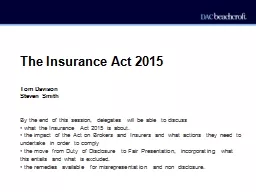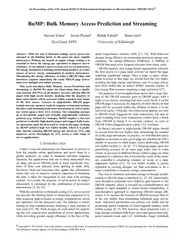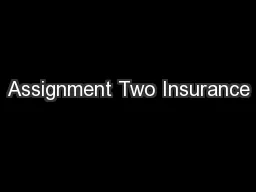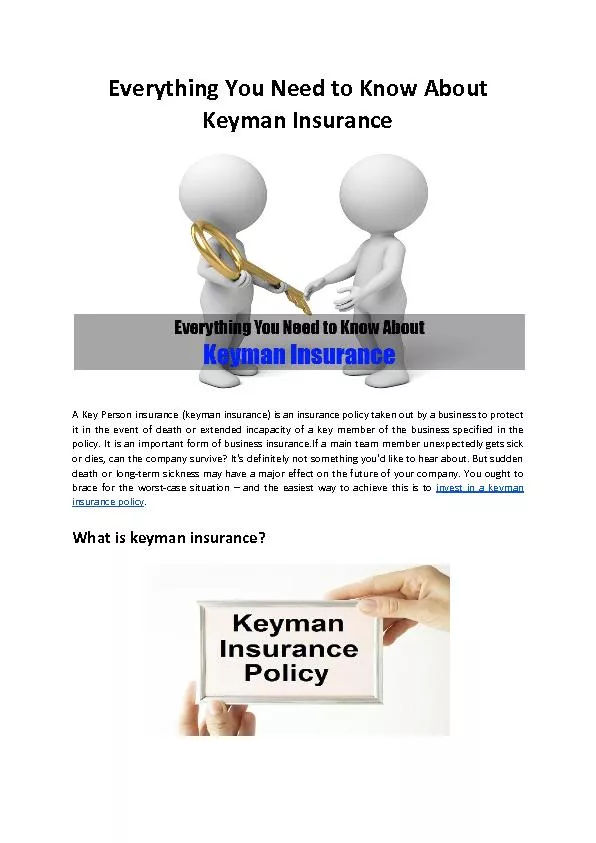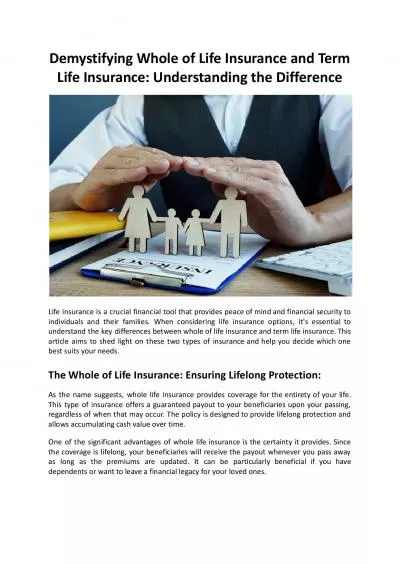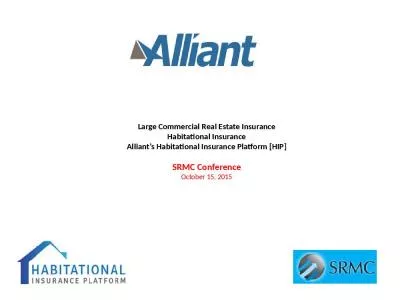PPT-The Insurance Act
Author : briana-ranney | Published Date : 2016-11-07
2015 Tom Davison Steven Smith By the end of this session delegates will be able to discuss what the Insurance Act 2015 is about the impact of the Act on Brokers
Presentation Embed Code
Download Presentation
Download Presentation The PPT/PDF document "The Insurance Act" is the property of its rightful owner. Permission is granted to download and print the materials on this website for personal, non-commercial use only, and to display it on your personal computer provided you do not modify the materials and that you retain all copyright notices contained in the materials. By downloading content from our website, you accept the terms of this agreement.
The Insurance Act: Transcript
Download Rules Of Document
"The Insurance Act"The content belongs to its owner. You may download and print it for personal use, without modification, and keep all copyright notices. By downloading, you agree to these terms.
Related Documents

